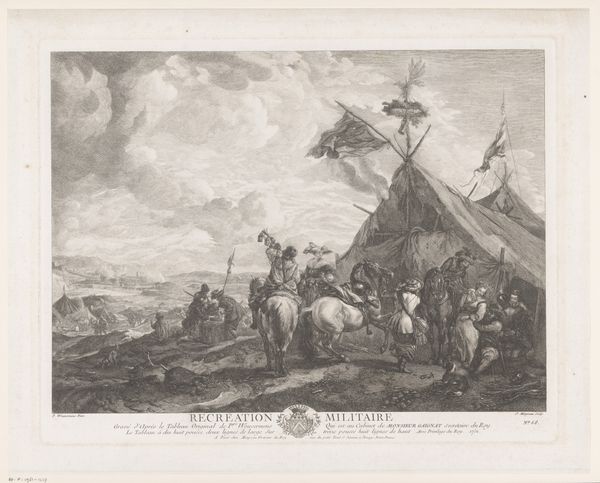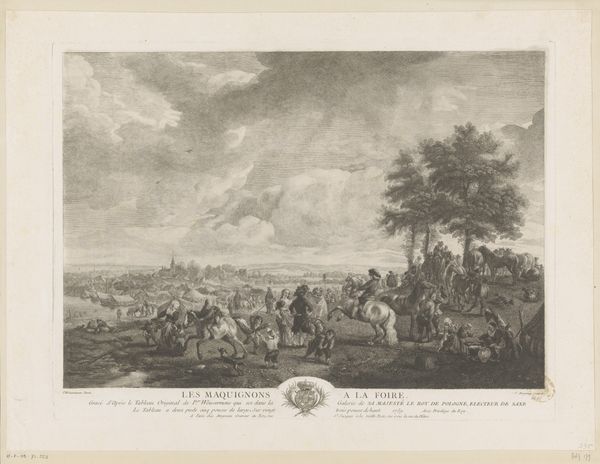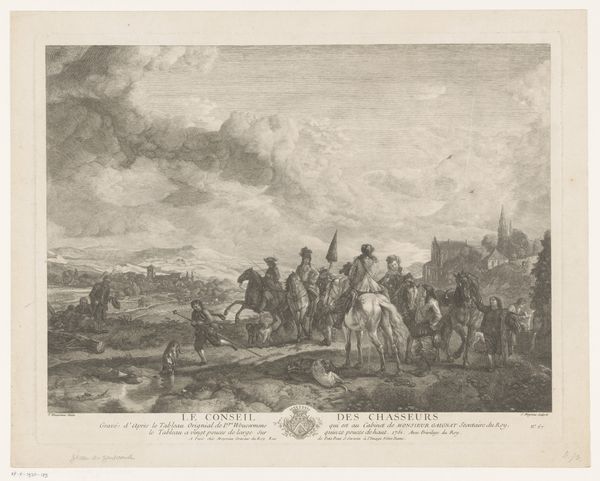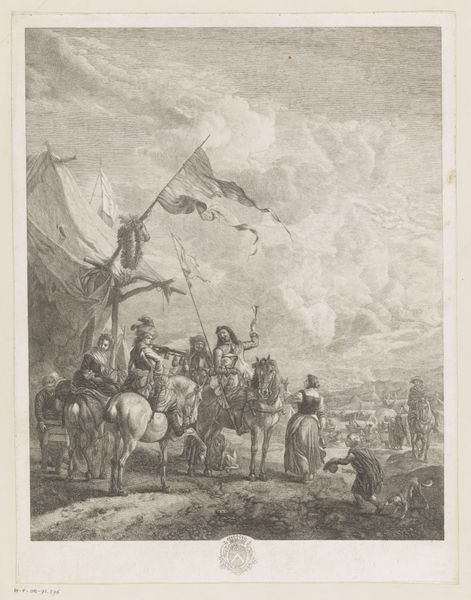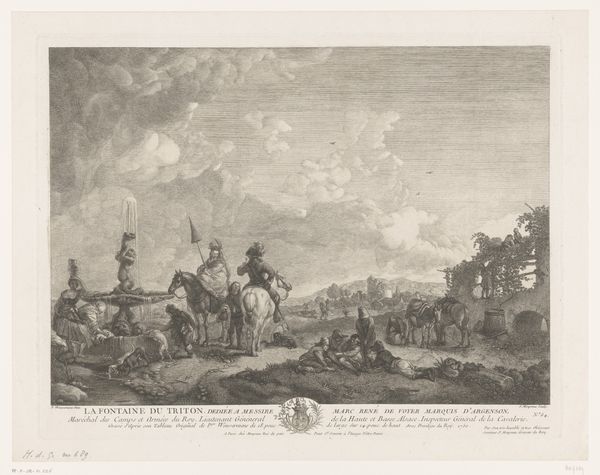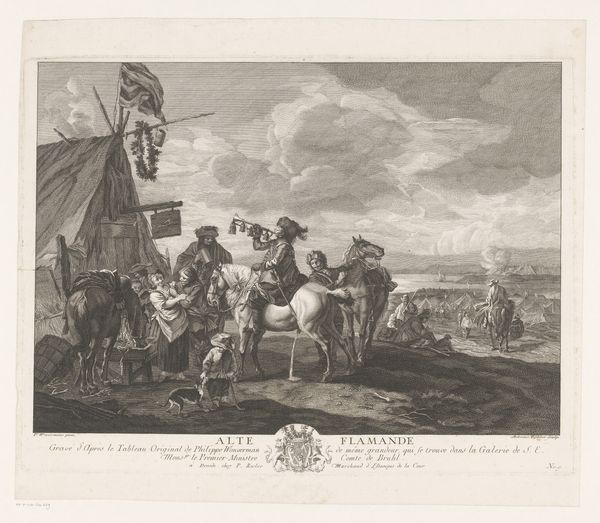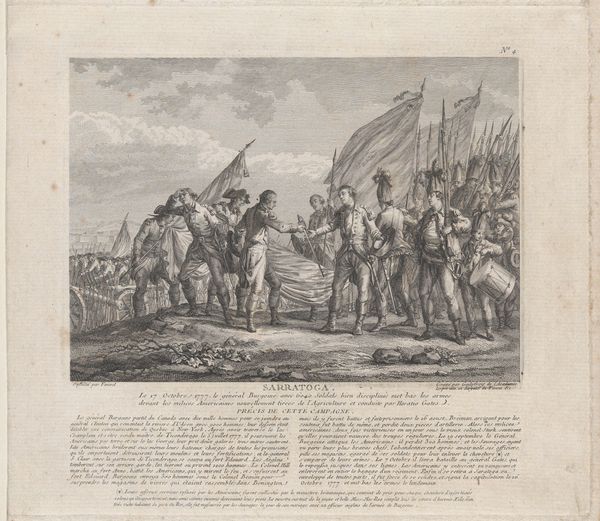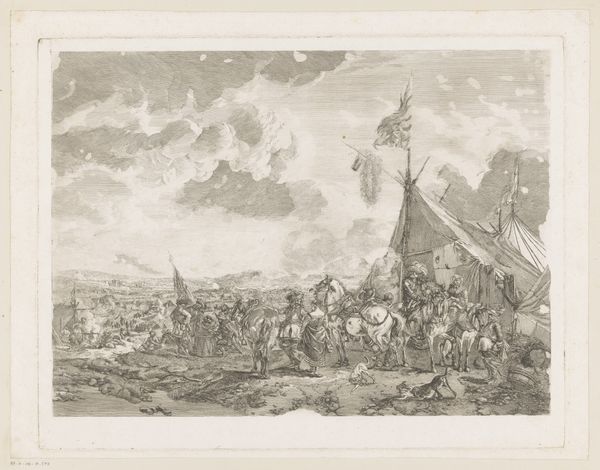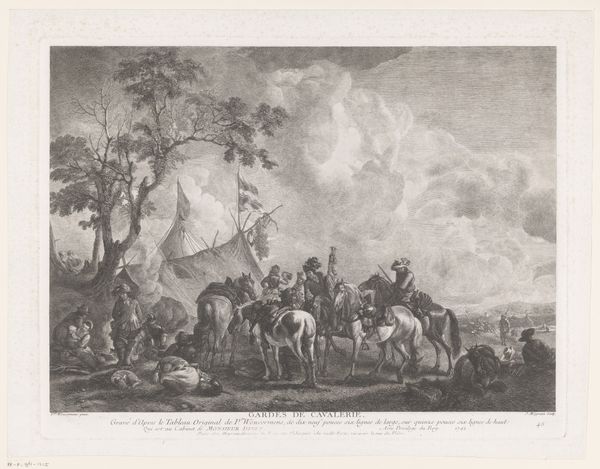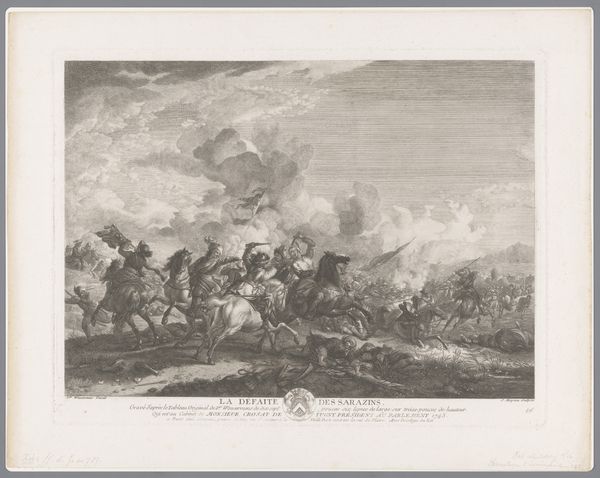
print, engraving
#
16_19th-century
# print
#
landscape
#
genre-painting
#
history-painting
#
engraving
#
realism
Dimensions: height 275 mm, width 340 mm
Copyright: Rijks Museum: Open Domain
Curator: "Uitbating binnen een legerplaats," which roughly translates to "Exploitation Within a Military Camp," attributed to Carel Christiaan Antony Last and housed here at the Rijksmuseum, is an engraving offering a glimpse into military life. What is your initial reaction to this piece? Editor: Bleak, undeniably bleak. The gray scale emphasizes a starkness; even with figures clustered together, the overall atmosphere is quite isolating. It feels like a world reduced to mere survival. Curator: The method of production – the printmaking itself – speaks to the function. Prints enabled distribution, fostering accessible and, perhaps, mass consumption of imagery. It moves away from the exclusivity of painting, for example. What narratives do you think an image like this perpetuated at the time? Editor: Well, in thinking about the 19th-century viewer, it potentially normalizes the presence of military infrastructure intertwined within daily life. Beyond glorifying or criticizing warfare explicitly, it seems to frame that intersection – camp followers, the economics around military supply lines – as commonplace and inherently masculine. How are women or marginalized communities represented, or more accurately, under-represented, in relation to this military operation? Curator: It's a calculated view, indeed. We're observing genre and history painting merge through the medium. I would argue there is close attention given to texture—the coarse canvas of the tents, the horses’ coats—creating a somewhat documentary feel that is deliberately accessible, perhaps, even comforting, to appeal to that potential mass audience you spoke of. But what does it omit, consciously or unconsciously, about the realities of being situated on such a volatile and potentially precarious periphery of military activity? Editor: Exactly. Think about the material implications behind maintaining an army encampment like this depicted on captured or colonized lands. Last presents us with this detailed tableau, yet it arguably lacks any explicit accountability towards the environmental or societal repercussions that result from those choices made during periods marked by geopolitical struggle and upheaval. I cannot help but observe the romanticizing, and, quite frankly, glossing over potential atrocities, woven inextricably within those moments represented here. Curator: Agreed, while it offers detail in its textures and figures, the broader socio-political dimensions remain strikingly silent. It highlights the challenges inherent in understanding an artwork such as this without that critical historical awareness. Editor: Precisely. This detailed tableau underscores how even seemingly objective depictions embed specific viewpoints. A work such as Last’s is an archive, but it is one necessitating thorough unpacking.
Comments
No comments
Be the first to comment and join the conversation on the ultimate creative platform.
